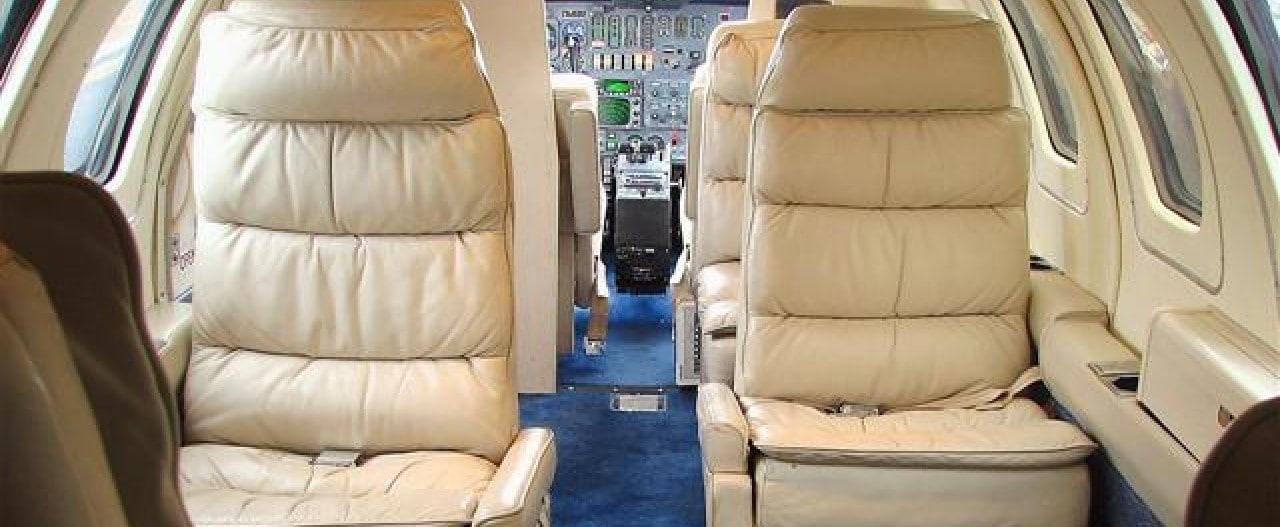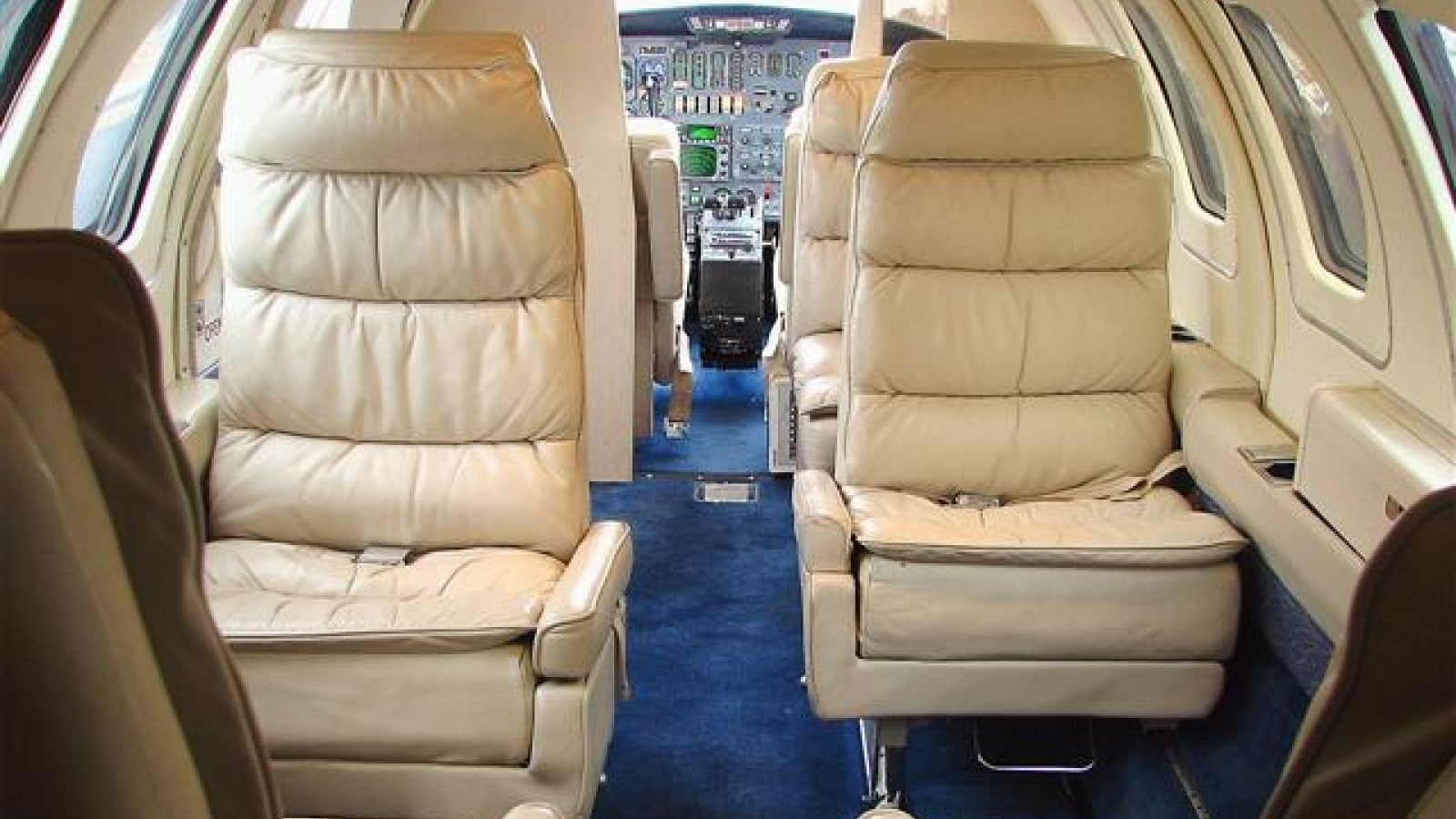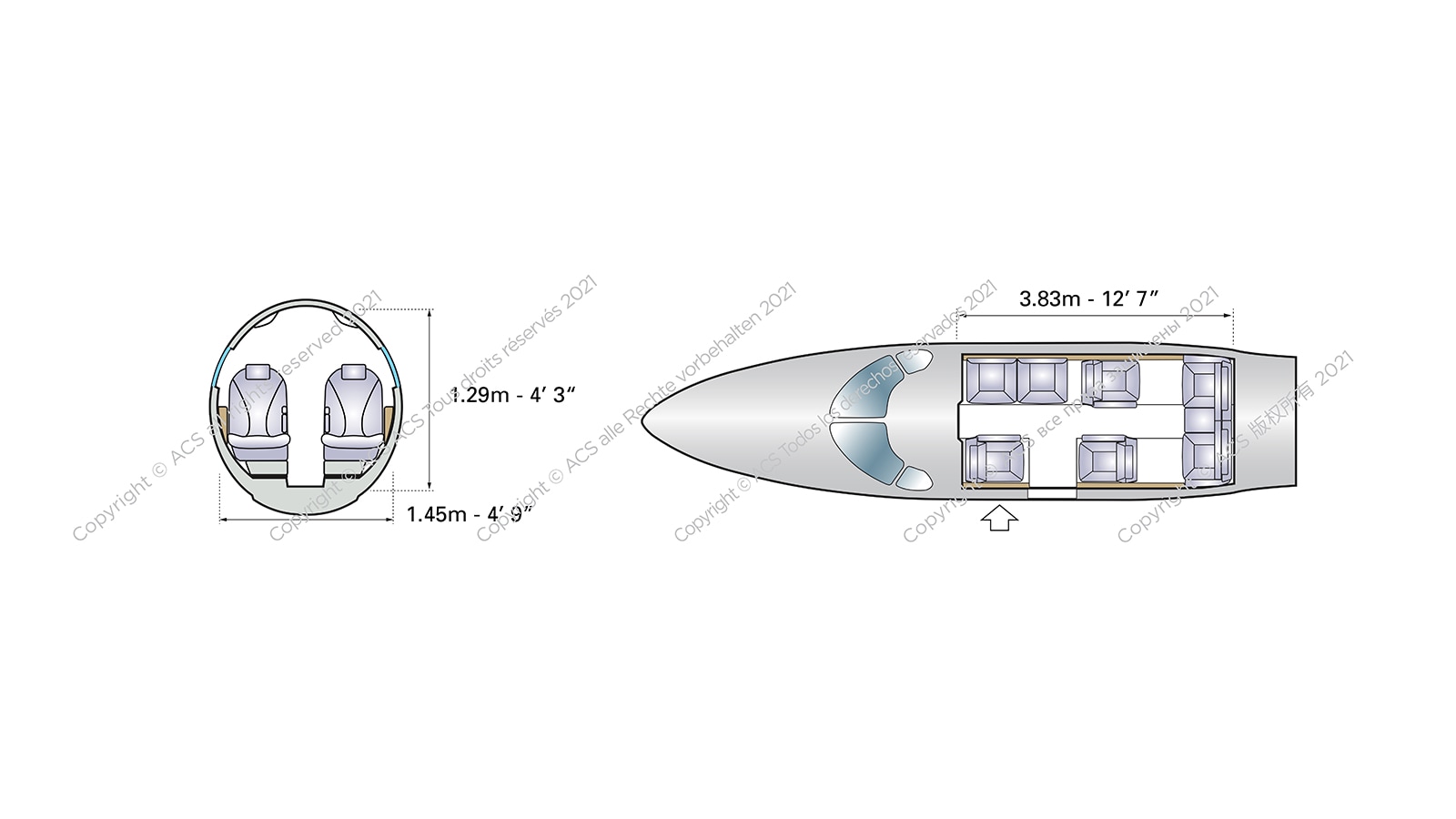CESSNA CITATION I
- Passengers 5
Originally ridiculed, the Cessna Citation I became the blueprint for the incredibly successful Citation family and remains a comfortable and reliable charter option.
About this aircraft
- Originally called the FanJet 500, it hit the market in 1972 as the Citation Model 500 and was rebranded the Cessna Citation I in 1976.
- Available layouts can accommodate five to seven passengers, with a further seat at the back if the aircraft is configured with an aft divan.
- The Citation I can complete short-haul flights like London to Madrid or New York to Atlanta with four passengers onboard without luggage.
- The baggage hold has space for around seven items of hand luggage.
- After close to 700 deliveries, production of the Citation I and single-pilot Citation I/SP ceased in 1985.
Although dated, the Citation I’s airframe was designed to last decades, and several models currently on the market have been upgraded to improve their interior and performance.
Interior design

The Citation I can seat up to seven passengers. Its original cabin featured single seats on either side, while retrofit packages add an aft divan or front-cabin "barrel sofa". Some updated models have foregone the semi-enclosed lavatory in the rear in order to provide more legroom.
Below are two typical configurations found onboard a Cessna Citation I.


Interesting facts to learn before you fly
- Many Citation Is have been retrofitted and modified to increase range, improve performance and upgrade the cabin. Examples of this are Sierra Industries’ Eagle II and Stallion packages.
- An Eagle II can reportedly reach 43,000 feet in 25 minutes, while an original Citation I must ‘step climb’ to 41,000 feet over the course of 80 minutes.
- The Citation I has less baggage space than an entry-level Citation Mustang.
- It’s slower than similarly-aged Dassault Falcon 10s and Learjet 35As, but offers slightly lower per-mile direct operating costs.
Technological features
Two Pratt & Whitney Canada JT15D-1 turbofan engines were originally chosen for the Citation I, each providing 2,200 lbs of thrust.
The aircraft’s original ARC analogue radio avionics have been upgraded to modern digital technology, including dual Collins VHF comms, VIR 30 navs, ADF 60s, the Sperry APZ 500 autopilot and Bendix RDR 1100 radar.
History
In 1968, Cessna announced plans to build a business jet that could compete with twin turboprops by operating from shorter airfields. The FanJet 500 prototype made its first flight the following year, before undergoing several design changes and being renamed the Citation Model 500. Certified in 1971, it was over 136 mph slower than the Lear 25, leading to nicknames like “Slowtation” and “Nearjet” in the aviation media.
Cessna continued developing the aircraft, adding thrust reversers, higher gross weights, lengthened wingspans and more powerful Pratt & Whitney Canada engines to increase its maximum altitude to 41,000 feet and drastically improve its short runway performance. These changes were marked with a new name – the Citation I.
Another key change came when Cessna released the Citation I/SP in 1977. Certified to fly with a single pilot, it could now compete with the turbojet market and distance itself from other business jets.
Ultimately, Cessna had the last laugh, with nearly 700 Citation Is and I/SPs delivered until production ceased in 1985. The aircraft was a springboard for some of the most successful business jets of all time, including the Citation II/Bravo and Citation V/Ultra/Encore.
Manufacturer
Cessna was founded in 1927 by Clyde Cessna and Victor Roos. It was originally called the Cessna-Roos Aircraft Company, but Roos’ name was dropped after he resigned just one month into the partnership and sold back his interest to Cessna.
Headquartered in Wichita, Kansas, the company specialised in producing small piston-powered planes and business jets. After becoming one of the world’s biggest general aviation producers, it was bought by General Dynamics in 1985 and by Textron in 1992. In March 2014, Cessna stopped operating as a subsidiary company and joined Beechcraft and Hawker as one of the three distinct brands produced by Textron Aviation.
Cost
A used Citation I costs around $400,000 (USD), with a 1980 model setting you back up to $700,000. A full-up conversion can be achieved for under $3 million, including acquisition.
Charter rates
Charter rates for the Cessna Citation I can vary greatly depending on the length of the journey you have planned, as well as the airports you decide to fly in and out of.
Contact our team to book a private charter flight on the Cessna Citation I. For information on other private jets, browse our list of available charter aircraft.
Wet lease rates
ACMI (aircraft, crew, maintenance, insurance) wet lease rates for the Cessna Citation I can vary depending on the age of the aircraft, length of lease term, number of block hours being guaranteed and average cycle ratio. Contact us for a personalised quote.



